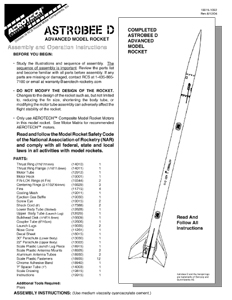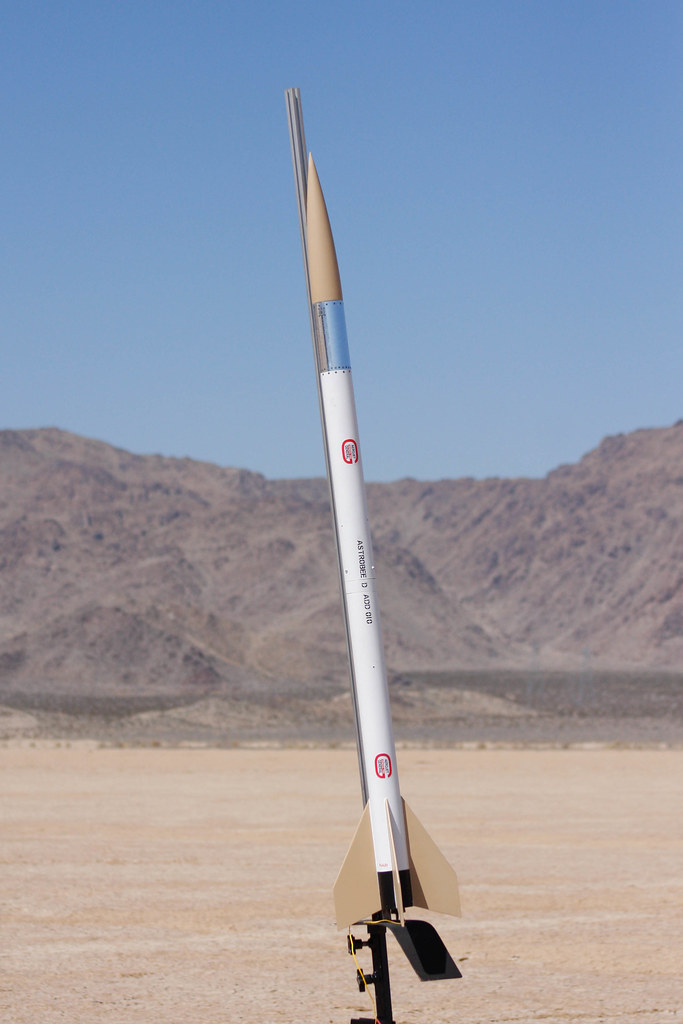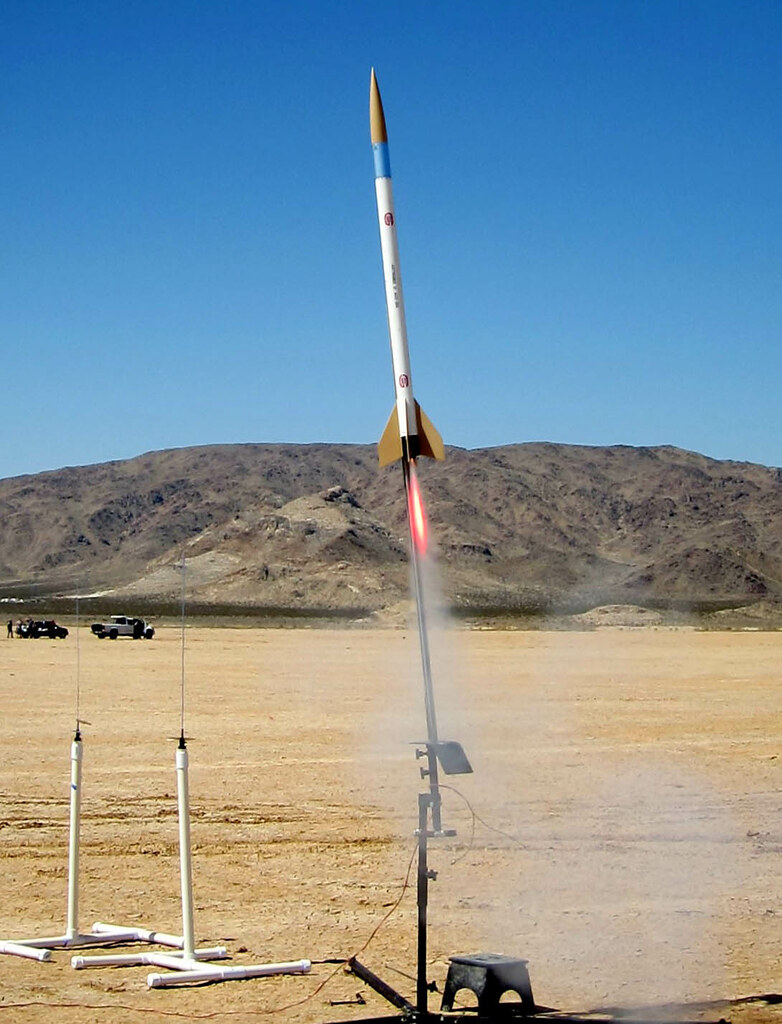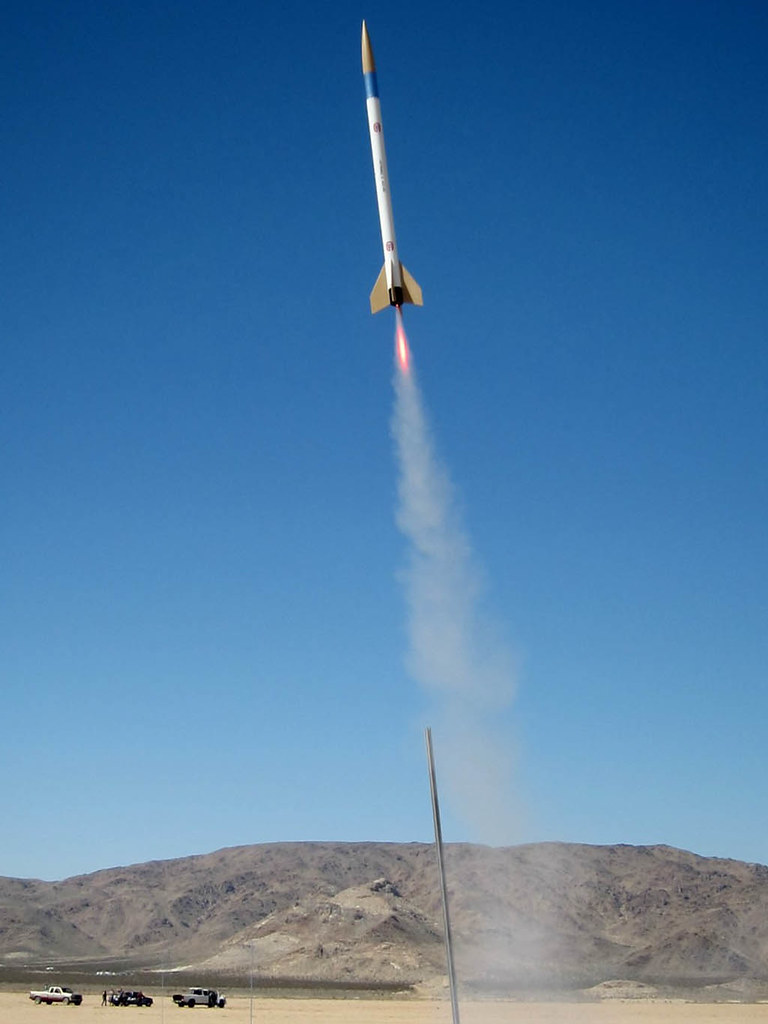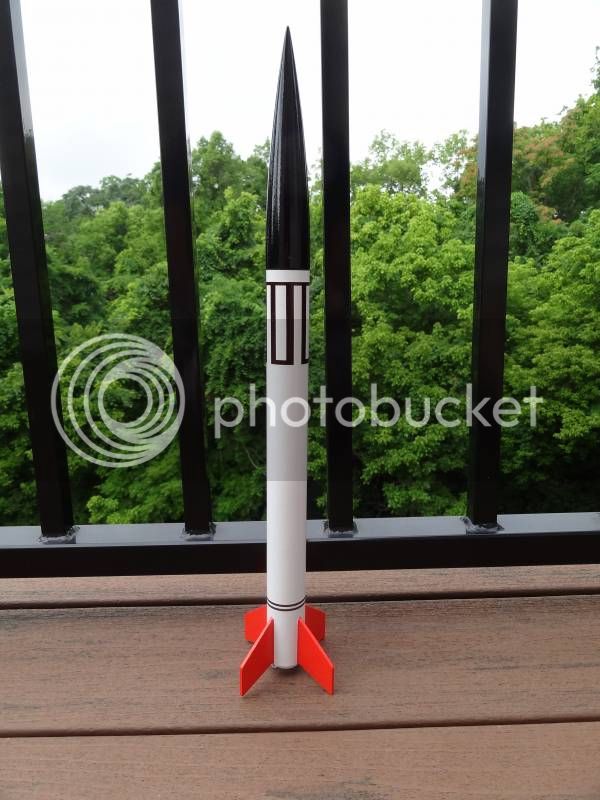JAL3
Well-Known Member
- Joined
- Jan 17, 2009
- Messages
- 14,333
- Reaction score
- 268
Welcome to the SCALE Astrobee Gallery on TRF.
This gallery showcases the Astrobee sounding rocket and those rockets derived from it. Particularly appropriate in this thread are the following:
AeroTech: Astrobee D: #89015
Centuri: Aerobee 350: KC-5 or #5065 See Editorial Note for This Rocket
Centuri: Astrobee 350: KC-5 or #5065
Enertek: Astrobee 1500: #8821
Yank: Astrobee D (2"):
as well as any upscales, downscales, clones, kitbashes or other derivative works. Even Goonies qualify!
Astrobee is the designation of series of American sounding rockets with 1 - 3 stages. Several versions were realized.
The three-stage Astrobee 500 (first stage: Genius, second stage: Alcor, third stage: Asp) has a ceiling of 1000 km, a takeoff thrust of 161 kN, a takeoff weight of 900 kg, a diameter of 0.38 m and a length of 7.80 m.
The three-stage Astrobee 1500 (first stage: Recruit, second stage: Aero jet, third stage: Alcor) has a ceiling of 1000 km, a takeoff thrust of 566 kN, a takeoff weight of 5200 kg, a diameter of 0.79 m and a length of 10.40 m.
The two-stage Astrobee 200 (first stage: Genius, second stage: Alcor) has a ceiling of 350 km, a takeoff thrust of 161 kN, a takeoff weight of 800 kg, a diameter of 0.38 m and a length of 6.30 m.
The single-stage Astrobee D has a ceiling of 140 km, a takeoff thrust of 23.00 kN, a takeoff weight of 100 kg, a diameter of 0.15 m and a length of 3.90 m.
The single-stage Astrobee F has a ceiling of 375 km, a takeoff thrust of 178.00 kN, a takeoff weight of 1500 kg, a diameter of 0.38 m and a length of 11.50 m.
This gallery showcases the Astrobee sounding rocket and those rockets derived from it. Particularly appropriate in this thread are the following:
AeroTech: Astrobee D: #89015
Centuri: Aerobee 350: KC-5 or #5065 See Editorial Note for This Rocket
Centuri: Astrobee 350: KC-5 or #5065
Enertek: Astrobee 1500: #8821
Yank: Astrobee D (2"):
as well as any upscales, downscales, clones, kitbashes or other derivative works. Even Goonies qualify!
Astrobee is the designation of series of American sounding rockets with 1 - 3 stages. Several versions were realized.
The three-stage Astrobee 500 (first stage: Genius, second stage: Alcor, third stage: Asp) has a ceiling of 1000 km, a takeoff thrust of 161 kN, a takeoff weight of 900 kg, a diameter of 0.38 m and a length of 7.80 m.
The three-stage Astrobee 1500 (first stage: Recruit, second stage: Aero jet, third stage: Alcor) has a ceiling of 1000 km, a takeoff thrust of 566 kN, a takeoff weight of 5200 kg, a diameter of 0.79 m and a length of 10.40 m.
The two-stage Astrobee 200 (first stage: Genius, second stage: Alcor) has a ceiling of 350 km, a takeoff thrust of 161 kN, a takeoff weight of 800 kg, a diameter of 0.38 m and a length of 6.30 m.
The single-stage Astrobee D has a ceiling of 140 km, a takeoff thrust of 23.00 kN, a takeoff weight of 100 kg, a diameter of 0.15 m and a length of 3.90 m.
The single-stage Astrobee F has a ceiling of 375 km, a takeoff thrust of 178.00 kN, a takeoff weight of 1500 kg, a diameter of 0.38 m and a length of 11.50 m.
Last edited:

















